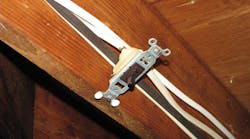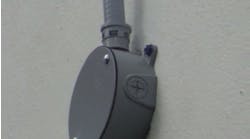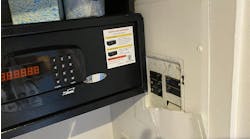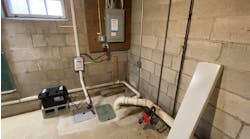Code Clusters is a fond look back at some of the most interesting and outlandish Code violations published in the pages of EC&M magazine over the past 15 years — the item below is the first in a series of 10. Questions? Comments? We'd love to hear your feedback! Post your thoughts in the box below.
We Don't Need Any Stinking Boxes!
All references based on the 2008 edition of the NEC.
This installation photo was contributed by Pierre Belarge, president of Electrical Training Solutions in Elmsford, N.Y. Belarge, who is an International Association of Electrical Inspectors (IAEI)-certified inspector. The installation violates the wording of 300.15, which clearly states that “at each conductor splice point, outlet point, switch point, junction point, termination point, or pull point” a box or conduit body must be used where the wiring method employed is “conduit, tubing, Type AC cable, Type MC cable, Type MI cable, nonmetallic sheathed cable, or other cables,” unless one of the subsections [300.15(A) through (M)] to the basic rule permits such application. This installation is not covered by any of those subsections, which are essentially exceptions to the basic requirement for some sort of Code-recognized enclosure at each “switch point.”
This attic switch is also in violation of the general secure-support requirements given in 300.11. The use of a single nail to attach the switch to a building structure should not be considered as meeting the criterion of “…securely fastened in place” simply because the switch can still move, which will put stress on the connection point. Note the use of masking tape on the device terminals. Yikes! It makes you wonder what was on the mind of the installer.




